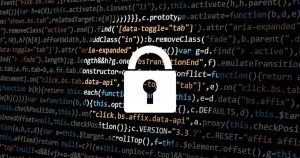Joint ventures (JVs) are widely used by Malaysian businesses looking to collaborate, and in most cases involve shared equity in a company.
The keystone to such a collaboration is a Joint Venture Agreement (JVA), a binding document that clearly outlines each parties’ respective roles, capital contributions and governance rights.
A JVA dictates how decisions are made, profits shared, and, crucially, what happens if things fall apart.
Unincorporated vs incorporated JVs
There are two main ways a joint venture can be structured in Malaysia.
Unincorporated joint venture (contract-based)
In a contractual JV, there is no new legal entity formed.
This is common for one-off projects, tenders, or temporary collaborations.
The arrangement is typically governed by a collaboration agreement or consortium agreements for construction projects.
Incorporated joint venture (company-based)
This is the most common and preferred model, especially for long-term ventures.
The parties form a Sdn. Bhd. (private limited company) and become shareholders.
The JV is then governed by a Joint Venture Agreement (JVA) – which often at the same time also functions as a shareholders’ agreement, subject to the company’s Constitution and the Companies Act 2016.
We will focus on incorporated JVs in the rest of this guide.
How do collaborations in joint ventures work?
A joint venture is about adding value, which can take many forms.
In many JVs, especially early-stage ventures or industry collaborations, one party may inject cash capital, while another contributes:
- technical knowledge
- industry connections
- equipment
- intellectual property (IP), or
- operational resources
As long as all parties mutually agree on the value each brings, the JV can be structured accordingly, including reflecting those contributions in equity ownership.
What matters most is that these contributions are clearly documented in the JVA.
When to sign a JVA
The best time to sign a JVA is before parties start making serious commitments, allowing negotiations without undue pressure.
Only once they agree on key terms do steps like injecting capital, transferring IP, or incorporating the company happen.
If you’re still in early-stage discussions, a Memorandum of Understanding (MOU) may be more suitable to document intentions while parties work towards finalising a JVA.
If the JV company has been incorporated
A JVA can be signed after incorporation, and may happen where:
- the parties already have an established business relationship, or
- early incorporation is needed for banking, licensing, name reservation or operational setup purposes
As long as the parties are aligned and no commercial steps have been taken without agreement, it’s perfectly fine and safe to formalise the JVA at this point.
That said, if there is no pre-existing relationship, it’s best to lock in the JVA early before any business activity begins under the JV company.
Key clauses in a JVA
Parties may have their own pre-existing business interests, and to protect those interests and align expectations, below we share some key clauses for a JVA.
| Clause | Purpose |
| Roles and Responsibilities | Sets out each parties’ obligations and roles – operational, technical, deliverables, etc. |
| Profit Distribution | How profits are calculated and shared among shareholders. |
| Capital Contribution | Sets out what each party is putting in – cash, assets, IP, or services. |
| Management / Control Rights | Who manages the JV company and how decisions are made (board vs shareholders). |
| Reserved Matters | Key decisions that require unanimous or special approval |
| Intellectual Property | Clarifies ownership and usage of any IP contributed or created during the JV, especially if one party brings in pre-existing IP. |
| Non-Competition | Restricts parties from running a competing business during the JV and for a period of time after exit. |
| Non-Solicitation | Prevents poaching of customers or employees from the JV or each other’s businesses. This is crucial if one party is contributing or sharing their valuable customer base. |
| Non-Circumvention | Prevents parties from bypassing each other to deal directly with key contacts, clients, or suppliers. This is crucial if one party uses their pre-existing business contacts to operate the JV business. |
| Drag-Along / Tag-Along Rights | Protects both majority and minority shareholders in exit or sale scenarios. |
| Prevalence of JVA | Ensures the JVA prevails over the company constitution if there are any inconsistencies. Without this clause, the constitution would prevail. |
| Exit Strategy / Termination | Sets out when and how a party can exit, such as through fixed term, IPO (initial public offering), sale or transfer of shares, or deadlock triggers. |
Whether you are the majority shareholder, minority shareholder, key person/founder, your position will determine whether these rights work for or against you.
Dangers of poorly drafted JVAs
A client came to us after a fallout with their JV partner.
One of the major disputes was over customer ownership, as our client had used their own marketing resources to bring in leads and shared them with the JV company. However, the JVA was silent on who actually owned those customer relationships.
Months of dispute followed, and legal action was taken.
This wasn’t a rare case. Many JV conflicts start with assumptions:
- one party assuming the other will share proprietary data or resources
- someone expects joint use of IP, but it was never agreed, or
- one party thinks decisions are joint, but the other has already acted unilaterally
When things turn sour, the JVA is your first line of defence, determining if disputes can end with a clean exit or drag along indefinitely.
Tailor your JVA to protect yourself from the start
Most JV disputes happen because nothing was written down properly!
A well-drafted JVA keeps business relationships on track and we regularly help clients structure JVAs that align with their commercial reality and support long-term business goals.
If you are entering a joint venture, let us help you secure your interest from day one.










